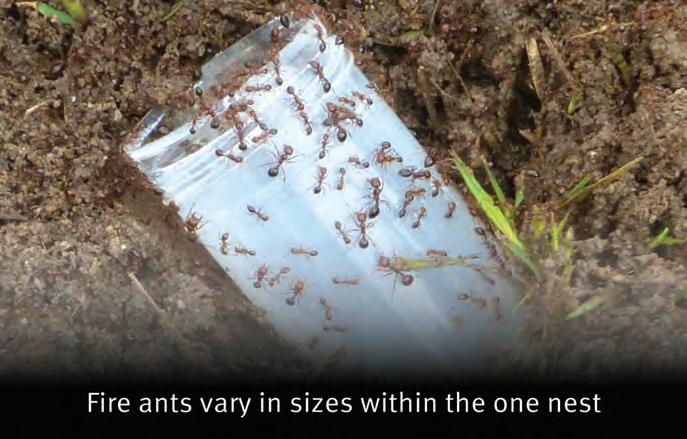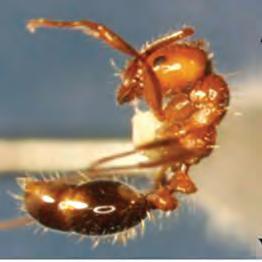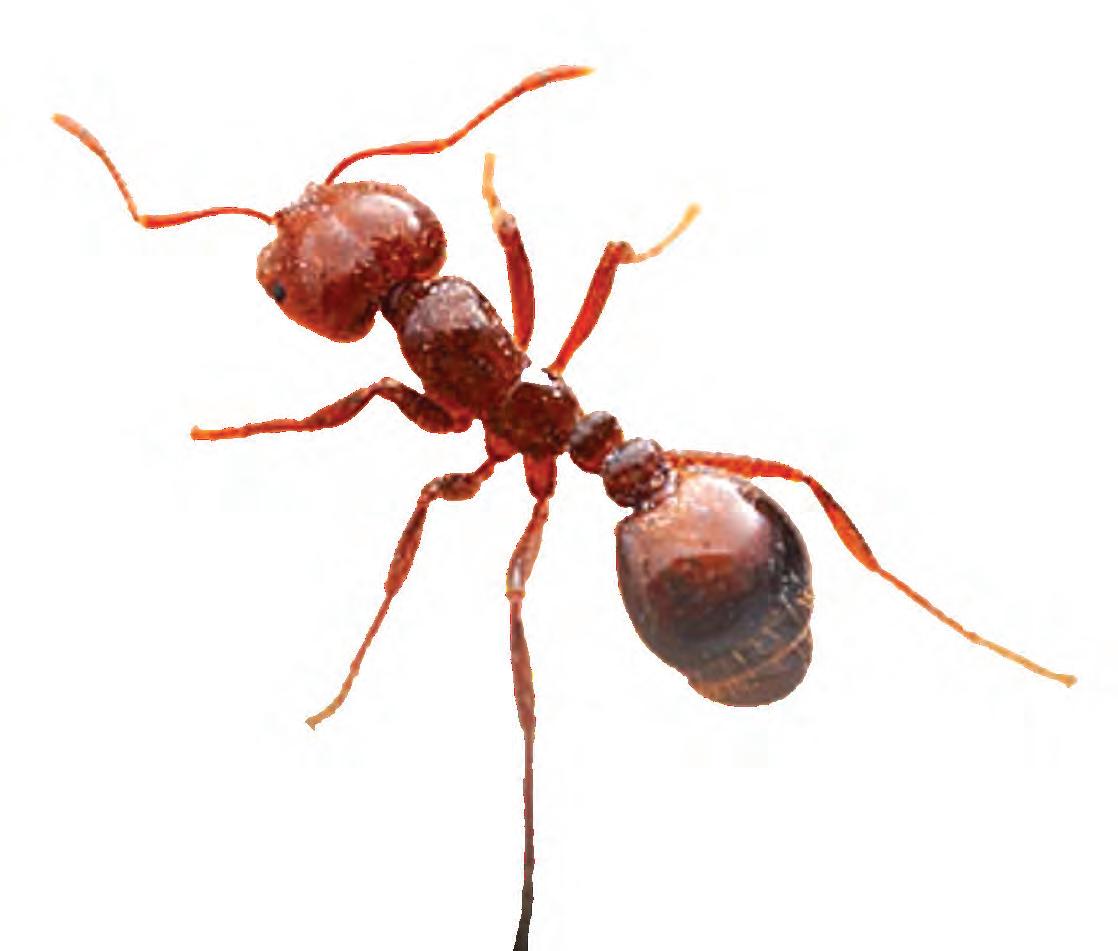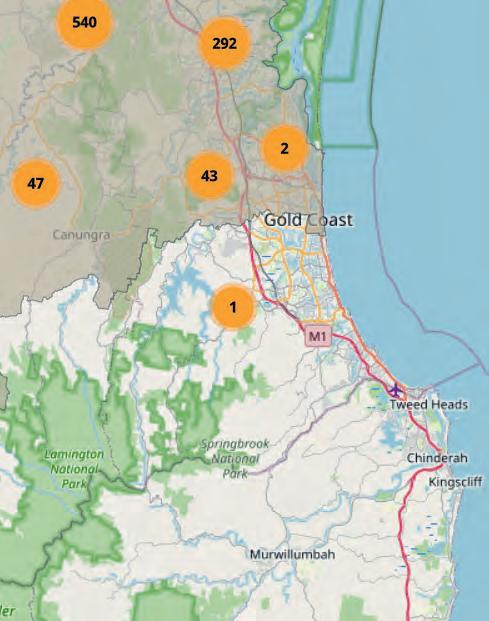
2 minute read
Halting the fire ant invasion
By Jonathon Howard
THE TWEED Shire could soon become the frontline of defence against one of Australia’s worst pests: red imported fire ants.
Advertisement
The NSW Government has already allocated an additional $80 million to protect the state from the scourge of the dreaded fire ant, with the latest sightings only 11.5 kilometres from the NSW border.
NSW Minister for Agriculture
Tara Moriarty has raised the alarm and says red imported fire ants cause serious harm with an estimated $1 billion per year of costs if the ant gets into NSW.
“It is important to keep NSW free from red imported fire ants, because if they become established in NSW, it will have a huge impact on the way we live our lives and could affect our export markets and ability to trade,” Ms Moriarty said.
“Red imported fire ants can damage electrical and agricultural equipment, sting people causing allergic reactions, sting pets and livestock, kill native plants and animals, as well as damage ecosystems beyond repair.
“Containing the spread of fire ants will provide an estimated economic benefit of more than $1 billion per year in avoided costs and impacts, which is why we have committed $80 million over the next four years to protect NSW and partner in the ongoing response to red imported fire ant.”
The red fire ants have been detected at Mermaid Waters in Queensland recently and nests have been found at Mudgeeraba, Carrara, Worongary, and Innisplain, all within 18 kilometres of NSW.

“The NSW Department of
How To Identify Red Fire Ants
Fire ants can be identified by a few distinguishing features.


They are: copper brown in colour with a darker abdomen quite small at 2-6mm found in a variety of sizes within the one nest. found, however, we also need the support of the community to spot their march and be on the lookout for them.
When checking suspicious ant nests gently poke the nest with a long stick and observe the ants that come out. Be careful not to get too close, as fire ants are aggressive. They swarm when disturbed and have a painful sting.
“Fire ants are dark reddishbrown with a darker blackbrown abdomen and from two to six millimetres long, and while they can look similar to other ants, their nests are distinctive with mounds of loose, crumbly or fluffy looking soil with a honeycomb appearance.
WHAT
“Look for them in sunny open areas, including lawns, parks, school grounds, sports fields, golf courses, gardens, foreshores, paddocks, disturbed soil and roadsides.”
Residents and businesses should check their properties and call NSW DPI on 1800 680 244 if there is any sign of fire ants, as early detection will increase the chances of successful eradication.
Map showing the sites in South East Queensland that have had confirmed fire ant infestations in the last 12 months

Fire ant biosecurity zone
Source: National Fire Ant Eradication Program
DO IF YOU FIND A FIRE ANT
To

Don't touch the ants or their nest with any part of your body as there is a high chance of being severely stung. Don't disturb or treat the infestation yourself as this can cause the ants to move and spread, or swarm and sting. If it's safe to do so, taking photos will help with identification.
If you can only see a nest, gently poke the edge with a long stick to encourage the ants to come out, making sure you don't get too close.
Keep your camera still and allow ants to walk past the lens.
Moving the camera too much makes the image blurry. Use the zoom on your camera to get a close-up image while keeping a safe distance.
Put an object like a coin or a key near the ants as a size comparison.
Take a photo and phone 1800 680 244 for assistance.










